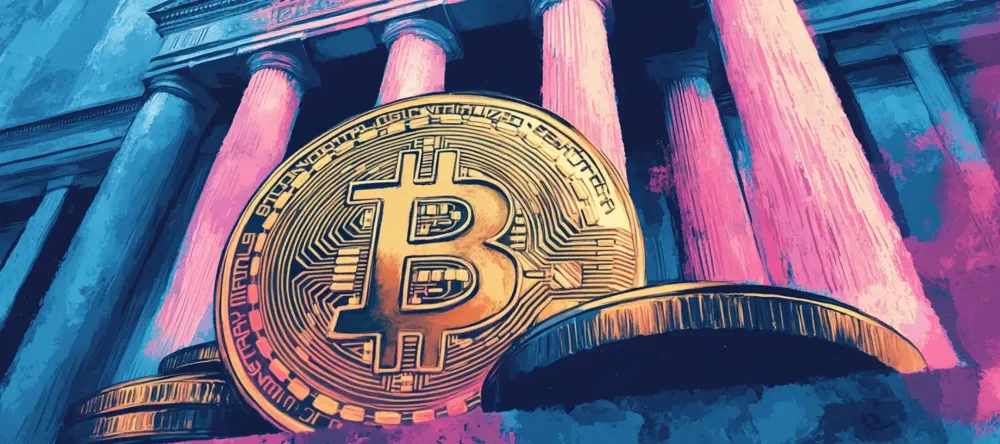Banks once treated digital assets as something remote, a curiosity best left to tech startups, but the mood has shifted. Over the past few years, partnerships and pilot projects have multiplied, showing that the old boundary between finance and crypto is dissolving. Today, customers expect easy access rather than complicated steps. The fiat to crypto onramp has become the missing link that makes this shift possible, turning abstract ideas about Web3 into real transactions people can actually use.
Banks embrace fiat-to-crypto onramps: What it means for the future of payments
For decades, banks thrived by relying on familiar instruments - current accounts, card networks, cross-border wires that often felt slow yet safe. Then came the steady rise of digital assets, initially treated with suspicion, occasionally even dismissed as fleeting speculation. This skepticism is fading fast. When JPMorgan agreed to work with Coinbase on direct card payments and loyalty point conversion into stablecoins, the announcement was less about publicity and more about signaling a tectonic change. Suddenly, one of the world’s largest banks was not only acknowledging crypto but also embedding it into services that millions of ordinary customers use every day.
This change is not confined to the United States. In Europe, PayPal’s integration with exchanges and the expansion of bank-led pilots show how institutional players are rushing to occupy a space that once belonged almost exclusively to startups. A fiat to crypto onramp is no longer seen as an exotic widget or a backdoor experiment; it has become the infrastructural glue which lets old and new rails function side by side.
Customers are not required to choose between their bank and their wallet - the systems are merging in real time, with banks carefully positioning themselves as custodians of both trust and liquidity.
From my perspective, the most compelling element here is not the marketing language but the way technology is altering daily financial habits. Paying with a card linked to an exchange wallet feels, in practice, indistinguishable from any other digital purchase. Yet behind that simple act is a dense network of settlement layers, compliance checks, and data-sharing agreements that would have been unthinkable a decade ago. Banks embracing these structures are betting that the future of payments will not be defined by separation but by hybridization. In that sense, each fiat to crypto onramp is more than a channel - it is a declaration showing finance itself is evolving into a blended, always-on infrastructure.
Why financial giants can’t ignore fiat-to-crypto onramps anymore
Not long ago, senior executives in banking circles spoke of digital assets with a cautious distance, noting potential but rarely endorsing direct involvement. That distance has collapsed, driven not only by speculative rallies but by a more persistent force: consumer demand. Millions of account holders now expect their bank app to offer the same frictionless access to digital currencies as they experience when paying for a streaming subscription or ordering food online. This expectation is no longer abstract; it shows up in customer surveys, in app reviews, and in the competitive metrics which fintech companies proudly display. Banks can read the numbers as well as anyone, and the implication is obvious - hesitation carries a cost.

The reality is that ignoring crypto access points risks bleeding both transaction volume and client loyalty. Fintechs and neobanks, some with far fewer regulatory burdens, have proven that integrating a fiat to crypto onramp into their services does more than attract new users. It raises engagement, increases retention, and, importantly, secures recurring revenue from a customer base that sees crypto not as an exotic asset class but as part of daily financial life. Traditional institutions which continue to downplay this trend may preserve a veneer of caution, yet they run the risk of appearing outdated in a market where relevance is currency.
This shift most clearly in the partnerships that dominate headlines. Revolut’s direct integration with wallets, Stripe’s renewed support for stablecoins, or PayPal’s expansion of crypto purchase options are not stunts - they are calculated responses to an evolving market. When a fintech embeds a fiat to crypto onramp, it signals not just technical capacity but a philosophical stance: the idea of the wall separating fiat and blockchain being more permeable than regulators once believed. For established giants, the message is uncomfortable but unavoidable. Either adapt and fold these onramps into core infrastructure, or risk ceding the narrative - and the revenue - to those who already have.
Regulation reshaping the role of fiat-to-crypto onramps
Regulation, often portrayed as a barrier to innovation, is in fact the main driver pulling digital assets into the mainstream. When Kraken secured its e-money license from the UK’s Financial Conduct Authority in late 2024, the headlines focused on compliance, but the deeper meaning was clear. With that license, the exchange gained the ability to operate like a regulated payments firm, offering fiat deposit and withdrawal services under the same umbrella of consumer protections that govern traditional finance. This is not a cosmetic change; it transforms the very perception of what a fiat to crypto onramp represents in the eyes of banks, auditors, and end users.
Regulation has become a competitive weapon rather than a mere check-the-box exercise. Institutions which move first to obtain licenses demonstrate to clients they can combine innovation with oversight, building the kind of trust speculative marketing campaigns cannot buy. In Europe, the MiCA framework is forcing all operators who provide access to digital assets to clarify their status, disclose their reserves, and align with reporting standards. In practice, this means a fiat to crypto onramp under MiCA rules is no longer an opaque tool at the edge of finance, but a transparent mechanism open to scrutiny and trusted by both regulators and consumers.
From my perspective, this evolution is long overdue. For years, critics dismissed crypto entry points as shadows in the system - convenient but risky. Now, as jurisdictions from the EU to Japan and Singapore implement stronger licensing regimes, the narrative has flipped. A regulated fiat to crypto onramp can claim the legitimacy banks have long enjoyed, and in doing so, it narrows the distance between old finance and new. Rather than suffocating innovation, regulation is acting as a catalyst, giving institutions the confidence to integrate onramps into their platforms and giving users the assurance that they are not stepping into a void, but into an ecosystem where rules and protections finally apply.
The rise of fiat-to-crypto onramps in banking and fintech
The most telling signal that the financial landscape is changing is not a flashy headline or a sudden rally in coin prices, but the quiet, steady integration of onramps into mainstream platforms. When Binance Connect was embedded into MetaMask and user activity jumped by more than a third within weeks, the message was unmistakable: access matters. A fiat to crypto onramp is not a marginal add-on but a growth engine, directly affecting how many users a wallet retains and how much volume an exchange processes. I have watched these integrations spread across markets, and each case reinforces the same point - institutions that embrace seamless entry routes see measurable results.
In banking, the pattern is just as clear. JPMorgan’s partnership with Coinbase, Citi’s ongoing experiments with tokenized deposits, or even regional banks in Asia testing settlement on stablecoin rails all point toward the same trajectory. These are not pilots for the sake of press releases; they are strategic bets on infrastructure. And here is where the competitive tension sharpens: if fintechs can deploy a fiat to crypto onramp within weeks through APIs, banks cannot afford to spend years debating whether such tools belong inside their systems.
The market punishes delay, and customers migrate to whoever provides faster, cheaper, and more transparent access.
This is also the stage where specialized providers begin to shape the narrative. The growth of companies offering turnkey solutions demonstrates that the ecosystem is not dependent solely on massive banks or global payment networks. Sheepy has positioned itself as a provider of a simplified fiat to crypto onramp solution, reducing complexity for merchants who would otherwise struggle with direct banking integrations. This diversification is vital. It shows innovation comes not only from multinationals but from focused players who understand businesses need compliance, security, and speed without navigating the maze of legacy rails on their own.
Technology and user experience: The secret weapon of onramps
In the end, technology is never neutral; it either frustrates or empowers. When it comes to digital assets, the decisive factor separating successful platforms from those that fade into irrelevance is the user experience. I have spoken with developers who obsess over latency and settlement speed, but the average customer does not care about protocol design or data packets. What matters is whether a purchase feels instantaneous, whether the screen loads without hesitation, and whether the path from bank card to wallet mirrors the intuitive flow of any E-commerce transaction. This is why the fiat to crypto onramp, often hidden beneath layers of APIs and compliance logic, is in reality the secret weapon that determines adoption.

Look at the evidence from payment giants experimenting with instant bank transfers and card-linked crypto buys. The services that gained traction were those where the onboarding process resembled the checkout screens users already knew. In my view, this is where fintechs hold an advantage: they design around the customer journey first and then adapt the rails behind the scenes. Banks, on the other hand, tend to over-engineer, placing compliance prompts and redundant confirmation steps that make a simple buy feel like a bureaucratic ritual. A successful fiat to crypto onramp is the one disappearing into the background, making the act of entering the crypto economy feel natural, even inevitable.
The broader lesson extends beyond payments. It is about trust in the digital experience. If people feel friction, they abandon the process; if the interface gives them confidence, they return. The irony is that the technology stack beneath these flows is extraordinarily complex - from fraud detection systems to liquidity routing across multiple exchanges - yet what wins loyalty is the elegance of simplicity. The industry must recognize that user experience is not a luxury add-on but the decisive battleground on which the future of Web3 finance will be fought.
The new foundation of digital finance
The debate about whether banks and fintechs should embrace digital assets is no longer relevant; the real question is how quickly they can adapt. Partnerships with global players, the steady advance of regulation, and the demand from millions of customers have already made the direction of travel clear. At the center of this transition stands the fiat to crypto onramp, now recognized as essential infrastructure rather than an experimental tool. For businesses seeking to stay competitive in the Web3 era, Sheepy provides the reliable rails to make that shift both seamless and secure.
Sheepy helps leading iGaming, FX, and E-commerce brands grow their crypto payments - trusted since 2022.